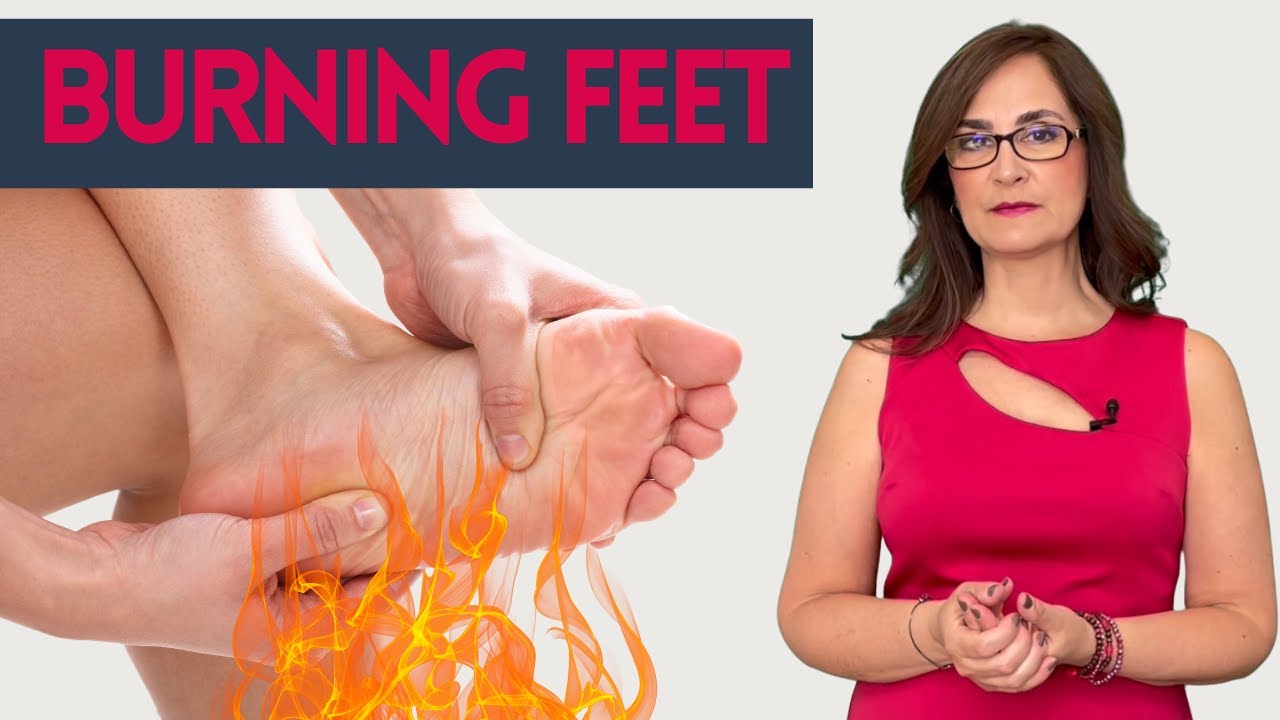health
The Future Of Retail: How Technology Is Changing The Way We Shop

With the advent of technology, retail has changed dramatically. What was once a brick-and-mortar industry is now an online, global marketplace that connects shoppers with the products they want. We’re living in a time when technology is transforming retail and changing the way we shop. From data analysis and product personalization to virtual shopping experiences and beyond, new advancements are making it easier for retailers to reach customers around the world. In this blog post, we’ll explore how technology is changing the future of retail and what you need to know to stay ahead of the curve.
The rise of e-commerce
E-commerce is on the rise as shoppers are increasingly turning to the internet to purchase goods and services. This trend is being driven by a number of factors, including the growing popularity of online shopping, the increasing availability of broadband internet, and the proliferation of mobile devices.
As e-commerce continues to grow, it is changing the way we shop. In particular, it is making shopping more convenient and accessible than ever before. With a few clicks of a mouse or taps on a screen, we can now purchase almost anything we want from the comfort of our homes.
E-commerce is also having an impact on traditional retail businesses. Many brick-and-mortar stores are now incorporating online ordering and delivery into their business models in order to stay competitive. And as more consumers shop online, we are likely to see even more changes in the retail landscape in the years to come.
The fall of brick-and-mortar stores
The fall of brick-and-mortar stores has been hastened by the COVID-19 pandemic, as consumers have turned to online shopping in droves. This shift has been years in the making, however, as ecommerce has slowly chipped away at the dominance of physical stores.
There are a number of reasons for this trend. Online shopping is more convenient, allowing consumers to make purchases from the comfort of their homes. It’s also often cheaper, thanks to the lack of overhead costs associated with running a brick-and-mortar store.
The pandemic has simply accelerated a trend that was already underway. Many retail experts believe that brick-and-mortar stores will continue to decline in popularity in the years to come, as ecommerce continues to grow.
The growth of mobile shopping
The growth of mobile shopping is one of the most important trends in the retail industry today. More and more consumers are using their smartphones and tablets to shop online, and this trend is only going to continue. Retailers need to make sure that their websites are optimized for mobile devices, and that they are offering mobile-friendly payment options. Otherwise, they risk losing out on a huge chunk of the market.
The impact of social media on shopping
The advent of social media has had a profound impact on the way we shop. Thanks to platforms like Facebook, Twitter, and Instagram, we now have access to a wealth of information about products and brands that we didn’t have before. We can read reviews, see what our friends and family think, and get recommendations from people we trust.
This has made us more discerning shoppers. We’re no longer content to blindly buy whatever is being sold to us. We want to know that we’re getting the best possible value for our money. And if we’re not satisfied with what we see, we’re not afraid to voice our opinion online.
What does this mean for the future of retail? In short, retailers need to step up their game if they want to stay relevant. They need to offer products and services that are truly innovative and offer real value for customers. They also need to be transparent in their dealings, so that customers feel like they can trust them. Finally, they need to be active on social media, engaging with customers and build relationships of trust.
The rise of AI in retail
In recent years, there has been a surge in the use of artificial intelligence (AI) in retail. AI can be used for a variety of tasks, such as helping retailers personalize their customers’ shopping experiences, providing them with recommendations, and assisting them with inventory management.
There are many reasons why AI is becoming increasingly popular in retail. One reason is that AI technology is becoming more sophisticated and affordable. In addition, retailers are under pressure to provide more personalized service and to compete with online retailers, who have an advantage when it comes to using customer data to offer personalized service.
AI can help retailers solve these challenges by providing them with the ability to personalize their service at scale. For example, AI can be used to calculate each customer’s individual preferences and then make product recommendations accordingly. AI can also be used to monitor customer behavior and engagement in order to provide targeted marketing messages.
In addition, AI can help retailers manage their inventory more efficiently. By analyzing past purchase data, AI can predict which items are likely to sell well in the future and keep track of stock levels accordingly. This helps retailers avoid overstocking or running out of popular items.
Overall, the use of AI in retail is growing rapidly as technology becomes more sophisticated and affordable. Retailers that adopt AI will be better positioned to compete in the future by offering more personalized service and managing their inventory more effectively.
Conclusion
Technology is quickly revolutionizing the retail industry. We can expect to see more advancements over the next few years that will bring greater convenience and ease of use for shoppers, as well as improved customer service from retailers. This shift in technology has already had a massive impact on how we shop, and it’s sure to continue doing so for years to come. With these changes, there will be more opportunities for retailers to provide better experiences to their customers—which means great news for all of us!
health
Step Towards Relief: Dr. Irl Hirsch on Causes of Burning Feet
Food Drink
Balancing Starchy Vegetables: Expert Tips for Diabetes Diet

Introduction
Starchy vegetables like potatoes, corn, and peas can fit into a healthy diabetes diet when balanced correctly. Many people with diabetes fear these foods because they raise blood sugar. Yet these vegetables offer fiber, vitamins, and minerals essential for good health. With smart planning—using portion control, choosing cooking methods wisely, and pairing veggies with protein and healthy fats—you can enjoy starchy vegetables without big blood sugar swings. In this article, we share expert tips on how to balance starchy vegetables, manage glycemic control, and boost overall nutrition in a simple, practical way.
Understanding Starchy Vegetables and Glycemic Impact
Starchy vegetables have more carbohydrates than non-starchy ones like broccoli or spinach. Carbohydrates break down into sugar, which enters the bloodstream. The glycemic index (GI) measures how fast a food raises blood sugar. High-GI foods spike levels quickly, while low-GI foods cause a slower rise. Most starchy vegetables fall into the medium-GI category. For example:
- White Potato (baked): GI around 85 (High)
- Sweet Potato (boiled): GI around 63 (Medium)
- Corn (boiled): GI around 52 (Low)
- Green Peas (boiled): GI around 51 (Low)
By choosing lower-GI options and controlling portions, you can keep blood sugar stable while enjoying these nutritious foods.
Balancing Starchy Vegetables: Expert Tips for Diabetes Diet

Image by: Yandex.com
Tip 1: Master Portion Control
Portion size matters more than the vegetable type. A large serving of any starchy vegetable can overload your system with carbs. Aim for about ½ cup cooked (roughly 15 grams of carbs) per meal from starchy sources. To estimate:
- A tennis ball–sized scoop of mashed potato
- Half a cup of corn kernels
- Three to four small carrot rounds
Action Steps:
- Use measuring cups or a kitchen scale to learn your serving sizes.
- Fill ¼ of your plate with a starchy vegetable, ¼ with lean protein, and ½ with non-starchy veggies.
- Track your portions in a food journal or app for two weeks to build awareness.
Tip 2: Pair with Protein and Healthy Fats
Protein and fats slow digestion, reducing the GI effect of starchy vegetables. This pairing helps avoid blood sugar spikes. Try these combinations:
- Potato + Grilled Chicken + Olive Oil Drizzle: The chicken adds protein, and the oil adds healthy fats.
- Corn + Black Beans + Avocado: A Mexican-style bowl with fiber, protein, and monounsaturated fat.
- Peas + Cottage Cheese + Herbs: A light, high-protein side dish.
- Sweet Potato + Salmon + Greek Yogurt Sauce: Omega-3 fats from salmon and creamy protein from yogurt.
Action Steps:
- Always include a palm-sized portion of protein and a thumb-sized portion of healthy fat with starchy veggies.
- Experiment with different herbs and spices instead of sugar-laden sauces.
Tip 3: Choose Low-GI Preparation Methods
How you cook starchy vegetables changes their GI. Generally, boiling and steaming yield lower GI than baking or frying. Letting cooked starchy vegetables cool can also reduce their GI by forming “resistant starch”—a type your body digests more slowly.
Better Cooking Choices:
- Boil & Chill: Cook potatoes or sweet potatoes, cool them in the fridge, and use in salads.
- Steamed Corn: Steaming retains moisture and keeps the GI lower than roasting.
- Lightly Mashed vs. Smooth Mash: Chunky mash slows digestion compared to silky smooth.
- Roast with Olive Oil Sparingly: If you prefer roasted vegetables, use just a teaspoon of oil and roast at lower temperatures.
Action Steps:
- Plan ahead to cook a batch of starchy vegetables and cool for later use.
- Mix cooked and cooled veggies into soups, salads, or side dishes.
Tip 4: Rotate Your Veggies for Variety
Eating the same starchy vegetable every day can lead to nutrient gaps. Rotate between potatoes, sweet potatoes, corn, peas, squash, and plantains to get a range of vitamins and minerals. For example:
- Monday: Boiled green peas with mint
- Tuesday: Mashed sweet potatoes with cinnamon
- Wednesday: Corn and black bean salad
- Thursday: Squash noodle stir-fry
- Friday: Plantain chips baked lightly
Action Steps:
- Create a weekly menu that features at least three different starchy vegetables.
- Use seasonal produce for peak flavor and cost savings.
Tip 5: Incorporate Fiber and Whole Grains
Fiber further slows carb absorption. Pair starchy vegetables with whole grains like brown rice or quinoa to boost fiber content. For instance:
- Sweet Potato Bowl with Quinoa Pilaf
- Potato and Farro Soup
- Corn and Barley Salad with Herbs
Action Steps:
- Replace half your potato serving with a ¼ cup of cooked whole grain.
- Add chia seeds or ground flax to mashed vegetables for extra fiber.
Tip 6: Monitor Blood Sugar and Adjust
Individual responses vary. Test your blood sugar before and two hours after meals to see how your body handles different starchy vegetables and preparations. Keep notes:
- Which vegetable caused the biggest rise?
- Which cooking method worked best?
Over time, you will learn your personal tolerance. This data helps you fine-tune portions and pairings for optimal blood sugar management.
Action Steps:
- Invest in a reliable glucometer and log your readings.
- Share your logs with your healthcare provider or dietitian for guidance.
Building Balanced Meals Around Starchy Vegetables
A balanced plate ensures blood sugar stays steady:
- Non-Starchy Veggies: Fill half your plate with greens like spinach or broccoli.
- Lean Protein: Add a palm-sized serving of fish, poultry, tofu, or lean beef.
- Starchy Vegetable: Keep it to a quarter plate, about ½ cup cooked.
- Healthy Fats: Drizzle olive oil, add avocado, or sprinkle nuts.
Sample Day Menu
- Breakfast: Veggie omelet with a small baked sweet potato.
- Lunch: Quinoa salad with corn kernels, black beans, and lime dressing.
- Snack: Carrot sticks with hummus.
- Dinner: Grilled salmon, boiled green peas, and a side salad with olive oil.
Expert Insights and Common Myths
Myth: “All starchy vegetables raise blood sugar too much.”
Fact: Portion size and pairing determine impact more than the vegetable itself.
Expert Advice:
- “Choose unprocessed starchy vegetables over refined grains for better nutrient density,” says Registered Dietitian Jane Clark.
- “Cooling cooked starchy veg builds beneficial resistant starch, improving gut health and glycemic control,” notes Dr. Mark Reyes, Endocrinologist.
Tips for Shopping and Storage
- Shop Seasonally: Fresh, in-season produce is tastier and cheaper.
- Buy Frozen: Frozen peas, corn, and squash keep nutrients locked in and last longer.
- Store Properly: Keep potatoes and sweet potatoes in a cool, dark place.
- Prep Ahead: Pre-cook and portion starchy vegetables for quick meals.
Conclusion
Balancing starchy vegetables in a diabetes diet is all about smart choices and personal tuning. Master portion control, pair carbs with protein and healthy fats, and favor low-GI cooking methods. Rotate your veggies, boost fiber with whole grains, and monitor your blood sugar to know what works for you. By building balanced plates and planning meals, you can enjoy the taste and nutrition of starchy vegetables without fear. Remember, a varied, well-rounded diet supports both glycemic control and overall health. With these expert tips, you’ll find confidence in crafting meals that nourish your body and keep blood sugar steady.
health
Top Derm’s 4 Home Remedies for Post-Pregnancy Skin Resilience

Introduction
Welcoming the miracle of life into the world is a joyous occasion, but for many mothers, it can be accompanied by the physical marks of motherhood—stretch marks. In this comprehensive guide, Rosemary Gladstar, an esteemed herbalist, collaborates with a top dermatologist to unveil a holistic approach to post-pregnancy skin resilience. Together, they offer insights into the power of nature and dermatological expertise to address stretch marks, providing effective home remedies for rejuvenating the skin after the profound journey of pregnancy.
Rosemary Gladstar’s Herbal Wisdom
1. Rosemary Gladstar’s Holistic Vision
At the heart of herbalism lies Rosemary Gladstar’s holistic vision. With a rich background in herbal wisdom, she views nature as a source of profound healing. Her philosophy centers on harnessing the power of herbs to nurture and restore the skin. This foundational perspective sets the tone for the collaborative effort in addressing post-pregnancy skin concerns.
2. Nature’s Bounty for Skin Resilience
Gladstar’s trust in nature’s bounty is evident in her approach to skincare. She believes in the efficacy of herbs and natural ingredients in promoting skin health. By exploring the healing potential of plants, she provides a gateway to a world where skincare transcends conventional methods, embracing the simplicity and efficacy of nature’s gifts.
The Top Dermatologist’s Insights
1. Dermatologist’s Expertise in Post-Pregnancy Skincare
Collaborating with Rosemary Gladstar is a top dermatologist, bringing medical expertise to the discussion. Their collaboration ensures a balanced and holistic approach to post-pregnancy skincare. The dermatologist’s credentials and experience set the stage for a comprehensive understanding of the challenges faced by post-pregnancy skin, especially concerning stretch marks.
2. Understanding Stretch Marks
Before delving into the remedies, it’s crucial to understand the physiology of stretch marks. The dermatologist provides insights into why and how stretch marks occur, offering a foundation for the home remedies that follow. This section aims to demystify the nature of stretch marks, making the solutions more relatable and effective.
The 4 Home Remedies

Image by: Yandex.com
1. Remedy: Herbal Infused Oils for Elasticity
The first home remedy focuses on enhancing skin elasticity using herbal-infused oils. Rosemary Gladstar’s herbal expertise comes to the forefront as specific herbs are introduced for their skin-nourishing properties. This remedy lays the foundation for improving the skin’s ability to stretch and recover, addressing one of the primary concerns of post-pregnancy skin.
2. Remedy: Nutrient-Rich Diet for Skin Renewal
The second remedy emphasizes the role of nutrition in supporting skin renewal. The dermatologist provides insights into the importance of a nutrient-rich diet for post-pregnancy skin health. This holistic approach addresses stretch marks from within, acknowledging the symbiotic relationship between diet and skin resilience.
3. Remedy: Gentle Massage Techniques
Maintaining a gentle touch becomes the third remedy, focusing on the benefits of massage techniques for improved blood circulation. Rosemary Gladstar shares her recommended massage techniques designed specifically for addressing stretch marks. This remedy combines herbal wisdom with practical application, offering a soothing and effective approach to skincare.
4. Remedy: DIY Herbal Skin Masks
The fourth remedy introduces the concept of DIY herbal skin masks. These masks, crafted from natural ingredients recommended by both Rosemary Gladstar and the dermatologist, become a rejuvenating treatment for post-pregnancy skin. The article provides easy-to-follow recipes and application tips, empowering mothers to take charge of their skincare routine.
Visual Table: Home Remedies for Post-Pregnancy Skin Resilience
| Home Remedies | Description |
|---|---|
| Herbal Infused Oils for Elasticity | Enhancing skin elasticity with Rosemary Gladstar’s herbs. |
| Nutrient-Rich Diet for Skin Renewal | Supporting skin renewal through a diet recommended by a dermatologist. |
| Gentle Massage Techniques | Improving blood circulation with Rosemary Gladstar’s massage techniques. |
| DIY Herbal Skin Masks | Rejuvenating the skin with at-home herbal masks. |
Real-Life Resilience
Testimonials and Experiences
Real-life experiences add a personal touch to the article, featuring testimonials from mothers who have successfully used these home remedies. These stories provide insights into the efficacy of the collaborative approach between Rosemary Gladstar and the dermatologist. Mothers share their journeys of rediscovering confidence and resilience in their post-pregnancy skin.
Incorporating Skin Resilience into Daily Life
Rosemary Gladstar’s Daily Rituals for Post-Pregnancy Skin Care
The article concludes with Rosemary Gladstar’s practical tips on incorporating daily rituals for post-pregnancy skin resilience. Beyond the specific remedies, she suggests a holistic lifestyle that nurtures both internal and external well-being. From herbal teas to mindfulness practices, Rosemary Gladstar’s guidance becomes a roadmap for mothers seeking to embrace their bodies with pride and gratitude for the miraculous journey of motherhood.
Conclusion
In the pursuit of stretch mark solutions, Rosemary Gladstar and the top dermatologist present a holistic and collaborative approach that combines herbal wisdom with medical expertise. The 4 home remedies offer effective and natural solutions for post-pregnancy skin resilience. As mothers embark on this journey, may they find empowerment in the simplicity of nature and the efficacy of dermatological insights. Let stretch marks become a testament to the strength and beauty of motherhood, adorned with the wisdom of herbal remedies and the expertise of dermatological care. Rosemary Gladstar’s herbal wisdom, combined with dermatological expertise, paves the way for a holistic and effective approach to post-pregnancy skincare, allowing mothers to embrace their post-pregnancy bodies with resilience and grace.
-
Business2 years ago
Cybersecurity Consulting Company SequelNet Provides Critical IT Support Services to Medical Billing Firm, Medical Optimum
-
Business2 years ago
Team Communication Software Transforms Operations at Finance Innovate
-
Business2 years ago
Project Management Tool Transforms Long Island Business
-
Business2 years ago
How Alleviate Poverty Utilized IPPBX’s All-in-One Solution to Transform Lives in New York City
-
health2 years ago
Breast Cancer: The Imperative Role of Mammograms in Screening and Early Detection
-
Sports2 years ago
Unstoppable Collaboration: D.C.’s Citi Open and Silicon Valley Classic Unite to Propel Women’s Tennis to New Heights
-
Art /Entertainment2 years ago
Embracing Renewal: Sizdabedar Celebrations Unite Iranians in New York’s Eisenhower Park
-
Finance2 years ago
The Benefits of Starting a Side Hustle for Financial Freedom

































